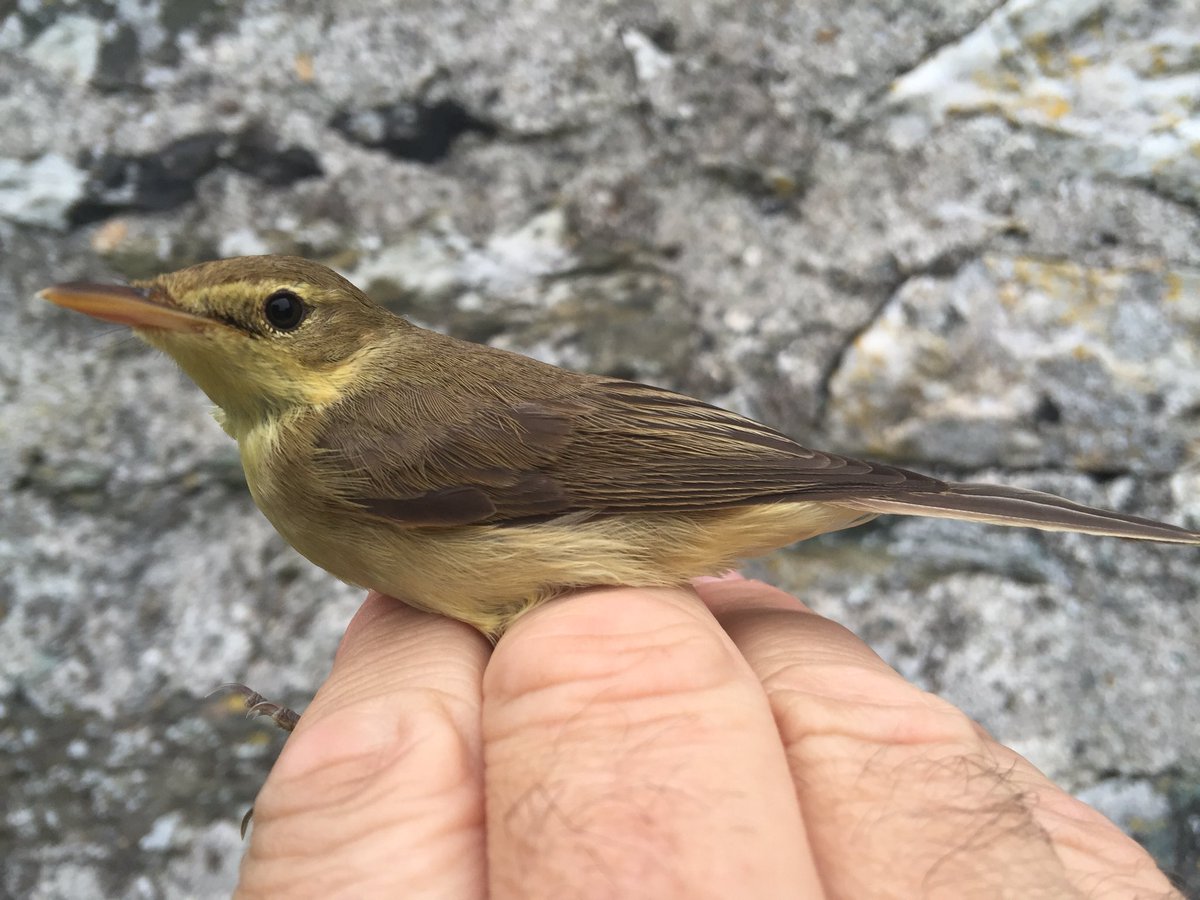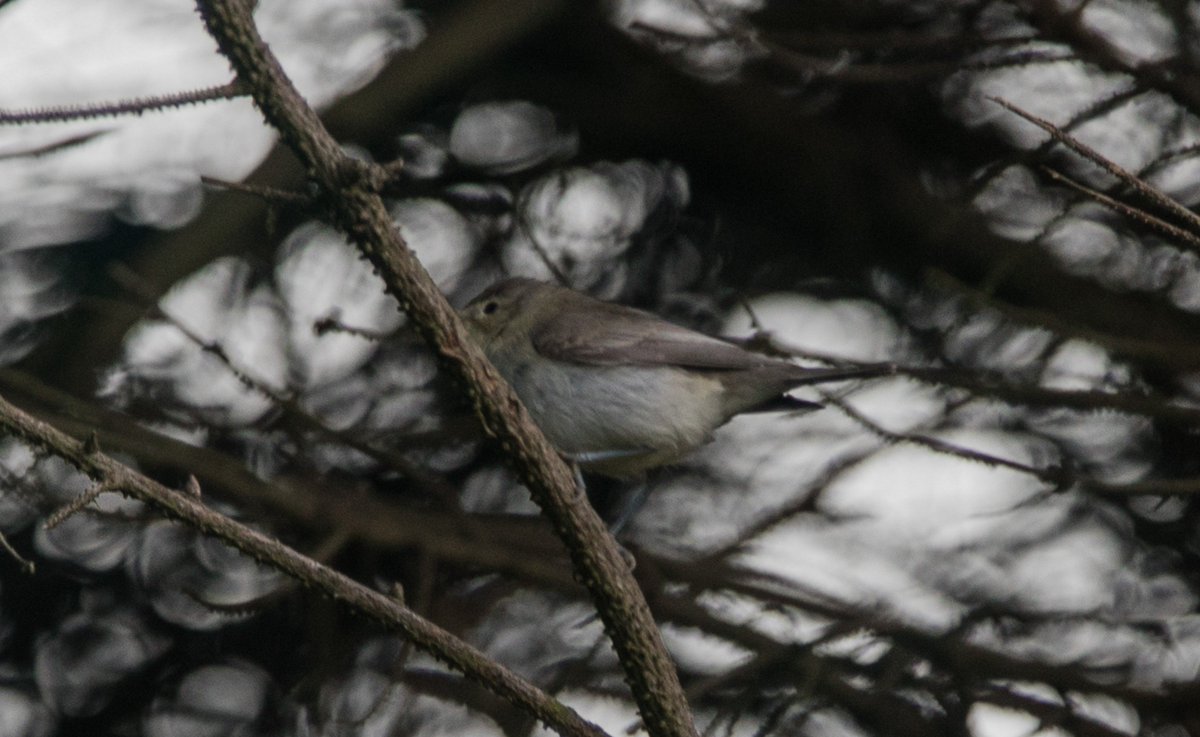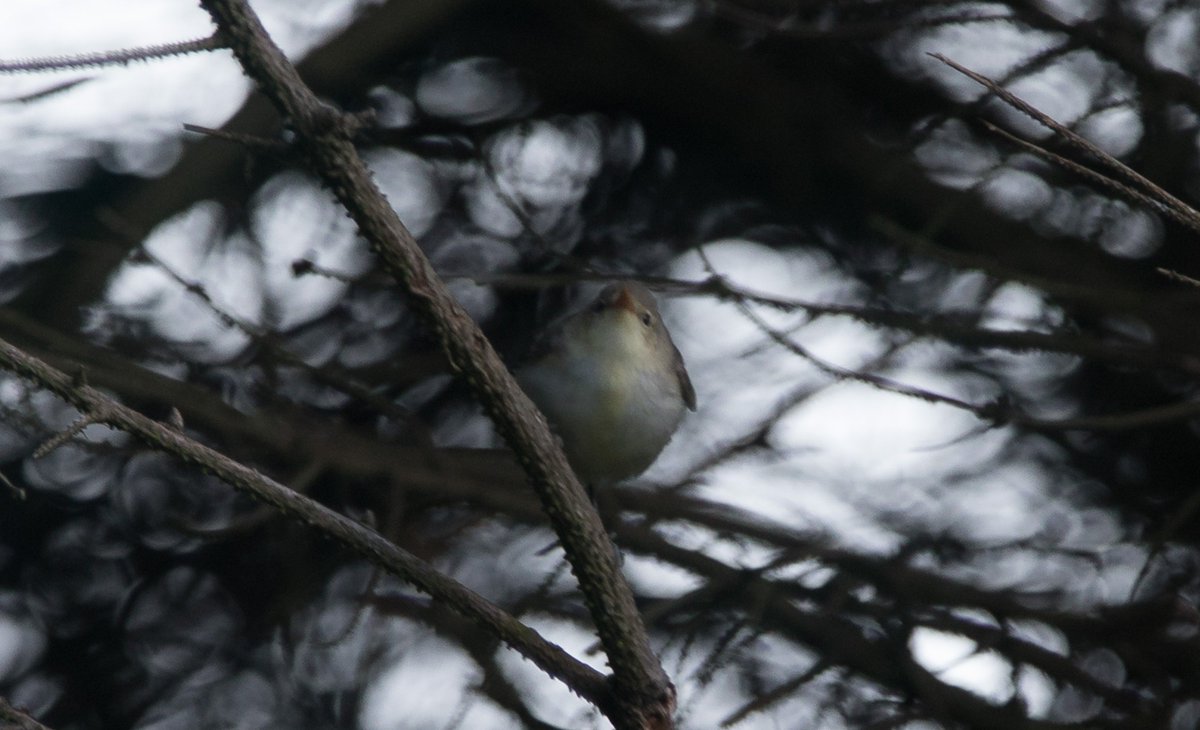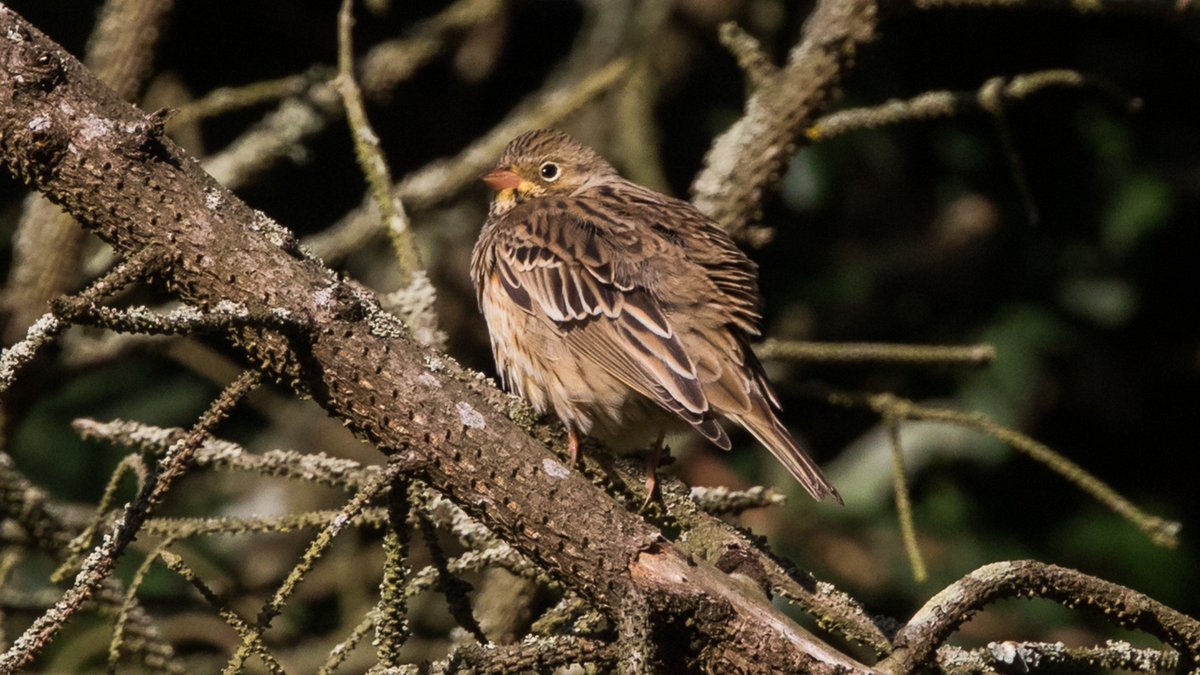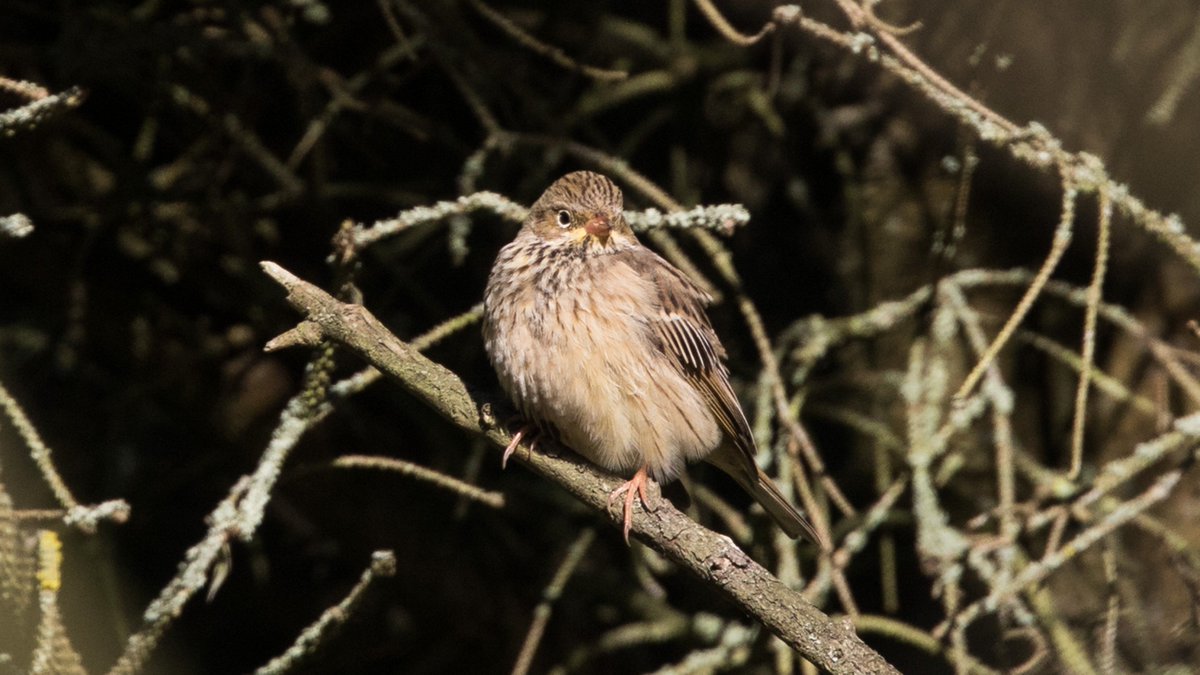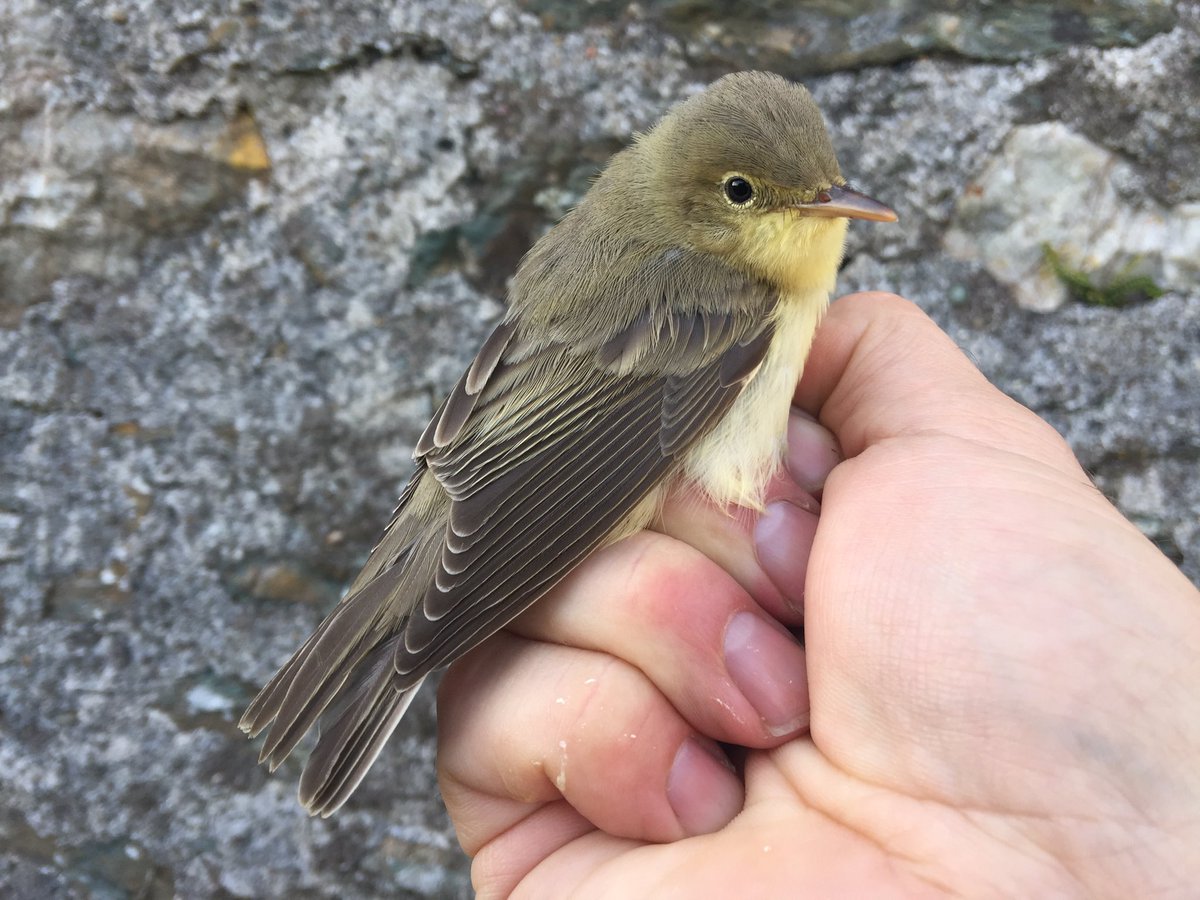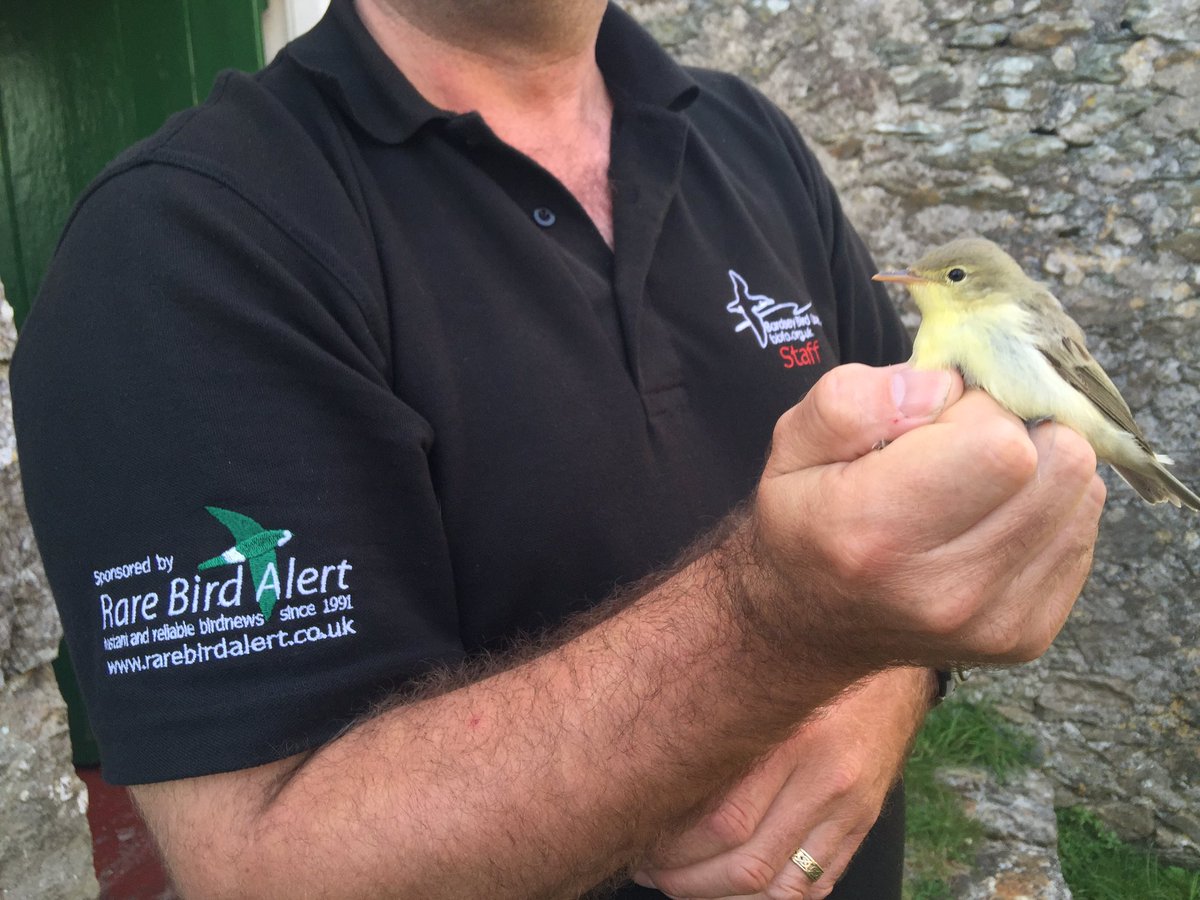Wader passage was again evident today and in reasonable numbers. Flocks of Knots passed the island and at the end of the day 37 had been logged. Redshanks also put in a fine appearance with 50 individuals seen, mostly heading in a southerly direction throughout the day. Dunlins amounted to 28, whilst two Greenshanks, and four Common Sandpipers added some variety. Oystercatchers were 33 today, two Ringed Plovers, four Whimbrels, 38 Curlews and 29 Trunstones were also seen.
 |
| Good numbers of Redshanks were seen along the coast |
 |
| The first Common Buzzard for a while |
Raptors put in a fine appearance throughout today, most notable being an Osprey which briefly drifted over the mountain ridge before heading north. We've had fantastic sightings of Osprey this season, this particular individual being the fifth record this year. At least six Sparrowhawks terrorised wildlife around the island today, five of them being seen over the mountain together at one point. Kestrels numbered two, a single Common Buzzard soared high overhead and two Peregrine Falcons, an adult and a juvenile also put in an appearance.
 |
| One of at least six Sparrowhawks that were present today |
The first Redstart of the year, a female or immature bird made an appearance behind the old schoolhouse and a Whinchat was present in the fields close by. Pied Wagtails had increased in number as 26 were logged around the Narrows also where the majority of the 75 Meadow Pipits and 29 Rock Pipits were found. The highest count of Spotted Flycatchers so far this Autumn weighed in at four, whilst Willow Warblers were still present but if fewer numbers amounted to 45. Meanwhile there were three Chiffchaffs and singles of Blackcap, Whitethroat and Garden Warbler. A Tree Pipit at Nant, nine Stonechats, 13 Wheatears, three Goldcrests, one Chaffinch, 154 Linnets and one Lesser Redpoll were also seen.
Great hirundine passage again occurred today as hundreds passed over the Narrows and South End. Swallows amounted to 524, House Martins 113 and three Sand Martins were picked out. Swifts also intermingled with these flocks and 16 were logged.
A passage of
Cormorants continued today as small flocks headed south whilst others dotted the coast, outnumbering
Shags today 49 to 19.
Grey Heron numbers increased to five, two adults and three juveniles and the first
Teal of the Autumn appeared amongst the
Mallards of which 28 were seen.
 |
The first Teal of of the Autumn with some Mallards
|
Fewer numbers were counted out at sea, however, 24
Fulmar, 333
Manx Shearwaters, 35
Gannets, one
Common Scoter, one
Arctic Skua and
one
Arctic Tern were seen passing. Plenty of gulls were again dotted around feeding in the fields and passing by the island with 281
Lesser Black-backed Gulls, 1,066
Herring Gulls, 49
Greater Black-backed Gulls and 1,020
Kittiwakes observed.
Cetacean sightings, in particular
Risso's Dolphins, have been almost daily of the past week or so. Today was no exception as eight were observed off the west coast along with eight
Harbour Porpoise, one of which was a calf.
 |
| Great numbers of Risso's Dolphins seen over the past weeks, note the tall sickle shaped dorsal fin |
 |
| These individuals were just out from the hide at the North End, Risso's Dolphins become more scared and pale in colouration as they get older, the reasons for this scaring is still not fully understood |
Although not huge numbers, a fine variety of Lepidoptera was on display today including, 12 Large Whites, 43 Green-veined White, a Small Copper, Common Blue, five Red Admirals, five Painted Lady's, four Small Tortoiseshells, nine Peacocks, 20 Meadow Browns, ten Silver Y's and seven Northern Eggars all enjoying the calm sunny spells. Migrant Hawkers made an appearance again with two seen, one at the north end of the island in some of the gardens and one around the farm further south.











